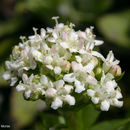en
names in breadcrumbs


Valeriana dioica, the marsh valerian, is a species of flowering plant in the genus Valeriana, native to Europe and Anatolia.[2] It is typically found in calcareous fens.[3] It is a dioecious species, with male and female flowers on separate individuals, and it is pollinated by small flies.[4]
The following varieties are currently accepted:[2]
Valeriana dioica, the marsh valerian, is a species of flowering plant in the genus Valeriana, native to Europe and Anatolia. It is typically found in calcareous fens. It is a dioecious species, with male and female flowers on separate individuals, and it is pollinated by small flies.